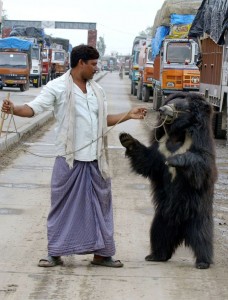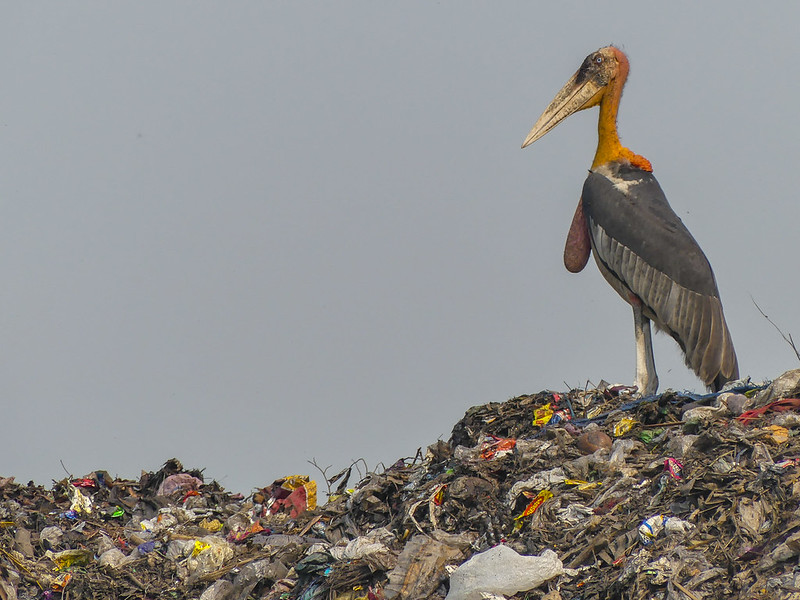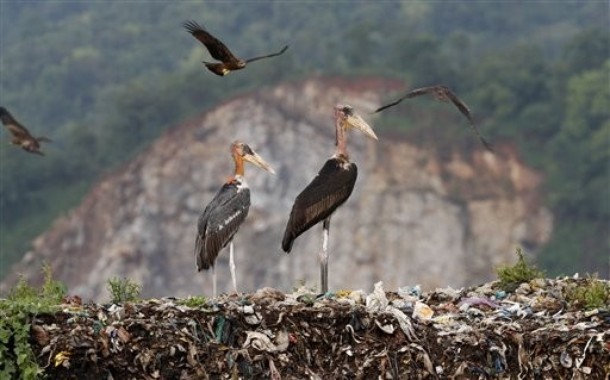 The cuddly stuffed bears make good bed time pals for kids. There are fairly tales that tell stories about cute baby bears looking for honey or just living in a forest home. And yet, when it comes to loving the real, forest dwelling, wild animal, the affection ceases to exist.
The cuddly stuffed bears make good bed time pals for kids. There are fairly tales that tell stories about cute baby bears looking for honey or just living in a forest home. And yet, when it comes to loving the real, forest dwelling, wild animal, the affection ceases to exist.
India is losing its sloth bears, also known as reech in the country. Killed out of fear, hunted for its body parts and driven out of its home the sloth bear is slowly moving towards a future when kids will only know it as a mythical, fairy world creature.
Present Population Status
15,000 remain in the country with major numbers in Maharashtra, Madhya Pradesh, Bihar, Orrisa and Chhatisgarh.
Bears are protected under schedule I of the Indian Wildlife (Protection) Act, 1972. All trade and export of their body parts has been banned. The forest department also gives compensation for bear attacks if there is a death or injury.
What is threatening the animal?
1. Habitat fragmentation and destruction –
Encroachment of land even inside the protected areas is prevalent in almost all states, according to a WII survey.
Ajay Pillarisett, assistant conservator of forest, Tadoba tiger reserve, says “A fragmented habitat means they have to travel longer distances to get fruits, mites, ants and plant material,” he said. “Sloth bears have poor eyesight, but a strong sense of smell. Their eyes are directed at the ground while they are searching for food. When there is human presence close by, they attack in self-defence.”
2. Human animal conflict –
Food resources of humans and bears are almost the same. Mahua flowers are used by tribal community to make wine and flour. The tendu leaves are utilized to make bidis and other forest fruits are consumed too by humans, leaving scarce options for the bears. When people come collecting for this resources, the animal therefore is bound to react and attack.
3. Degradations and loss of forests outside the protected area –
Urbanisation, industrialization etc. have eaten up the forest lands to such an extent that the sloth bears have no place to go. In many areas that are outside the forest protected area there are national highways, factories, villages and small towns. Even if the bear goes looking for new places to survive, it has to come face to face with urbanization.
4. Poaching –
It is by far the biggest threat to the bear population. Poachers, hunt for bear body parts especially their gall bladders which are used for traditional Chinese medicine. The reproductive organs, furs and claws of the animal too are popular as aphrodisiacs. Bear meat is consumed in the North-east and the teeth and claws are also used as ornaments or souvenirs.
Illegal trading of bear parts is known to happen with the poachers exporting the parts to countries like China, Hong Kong, North and South Korea.
 As if this was not enough, some baby bears are abducted or taken brutally from their mothers who are killed. The babies are trained to grow and become roadside entertainment puppets. Although WTI and WSPI have been working to eradicate the practice, it is still prevalent in remote corners of the country.
As if this was not enough, some baby bears are abducted or taken brutally from their mothers who are killed. The babies are trained to grow and become roadside entertainment puppets. Although WTI and WSPI have been working to eradicate the practice, it is still prevalent in remote corners of the country.
Present Conservation Efforts
The WTI and WSPA is planning to draft a national conservation plan to protect the sloth bear. There will be nationwide workshops conducted and also policies made to target specifically the problems associated with the bears.
Looking from the bear’s point of view it is the humans that have seized its homes, snatched its food and killed its mates and so it is bound to attack and fight for things that are justly his.
The major obstacle with animals like Tiger and Bears is the fear of the animals. If locals do realize that the animals too want their share of the land that humans have so easily marked as their own, the conflict and the struggle for living space will automatically cease to exist.
While the government can make new protection policies, segregate protected areas and ban poaching, it cannot help the bear unless locals support the cause.
Sloth bears don’t need to be feared, they need to be left alone in peace in their forest homes.
-Atula Gupta
Related Stories:






hi Atula… we small group of people in Gujarat are trying to raise voice against what happened with sloth bear in danta…. how it was eliminated by the department. we would like people like you supporting the cause… I am Narendra Mojidra filmmaker, working on documentary on Gir for last two years
Hi Narendra, Thank you for contacting us. Is there some information you have about the sloth bear other than the media reports? We would love to hear your side of the story. You can send a mail to contact@indiasendangered.com Thanks for your efforts.